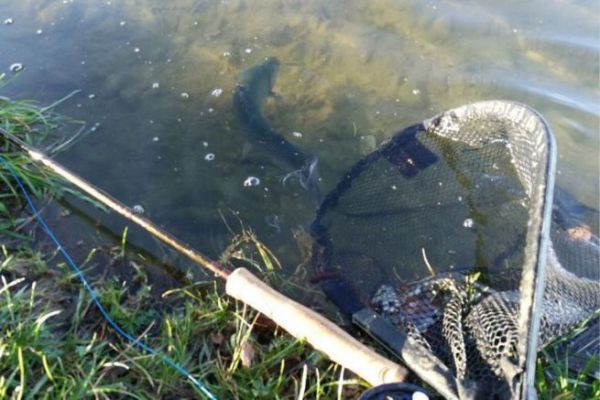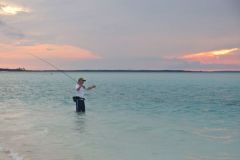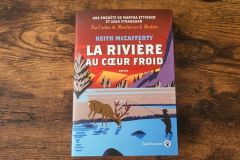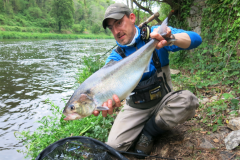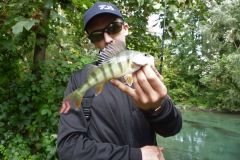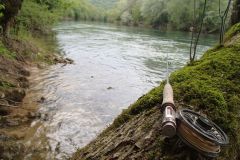Here are a few tips to get you started. We also suggest this other publication, 5 tips to improve your fly-fishing skills a useful complementary read.
Choosing the right equipment
When starting out with fly fishing, the choice of rod is inevitably an important one. Several factors come into play when deciding, in particular the type of fishing you'll be doing or the fish you'll be targeting. For a "classic" first purchase of a whip for trout and grayling, a semi-parabolic 9 or 9.6-foot (2.74 and 2.89-meter) 5-gauge fly rod will be the most versatile. There's no need to start out with overpriced equipment, and some ready-to-fish kits (Caperlan set, JMC discovery kit, Devaux Initial kit...) are even very good for beginners who want to get the hang of it over a few seasons. The angler can always upgrade to other models later on: to fish small, crowded rivers, shorter, less powerful rods are preferable, while for nymphing on large rivers, for example, an 11-foot rod may be more comfortable. For begin fly fishing for predators more powerful rods are required for bass fishing.
Don't hesitate to practice throwing before going to the water's edge
Casting, which is specific to this technique and enables you to propel your artificials correctly, requires a little practice and mastery. Before rushing to the water's edge, it's a good idea to get to grips with your equipment in the garden, for example, and try to reproduce the specific gestures. A few short but frequent training sessions will enable you to progress step by step, before heading out to the river to meet your first fish.
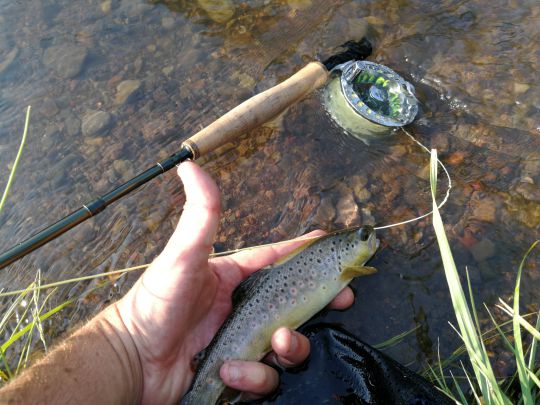
Get advice from experienced fishermen
If you know any anglers who have been fly fishing for several years, the easiest thing to do is to be accompanied to the water's edge. If a fly club (and there are many in the region!) exists close to home, this is one of the best ways to make rapid progress, whether you want to learn how to cast, get advice on the basic equipment to acquire, or make your first flies...
The web is full of information and practical advice (as this article proves!) to help you make the right choices. Tutorials, videos and articles are all well and good, but practising with a rod in your hand and talking to anglers who know what they're doing is even better.
Equip only with essential accessories
There's no point in bringing a whole load of gear to the water's edge, which will be cumbersome and, most of the time, unused. It's important to be selective, so that you only carry the bare minimum in your jacket, fishing vest or Chest Pack. Each angler will make his or her own choices as sessions progress, but certain tools remain indispensable. In particular, thread cutters, polarized glasses, barb crushing pliers (if not previously crushed), a landing net, spools of line for regular leader changes or to modify your approach, a fly drying tool (tinder type).
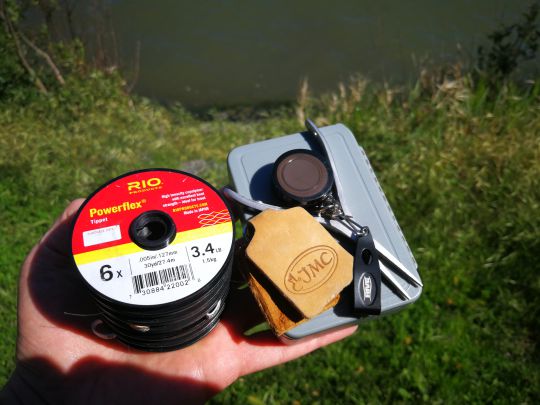
A small number of flies
It's not necessarily necessary to go to the water's edge with hundreds of flies in several boxes. This may reassure the angler, but 90% of artificial flies will remain in their box on the big day. To get started, a dozen dry fly models (ideally in different sizes and colors), a few nymphs and drowned flies will be more than enough to catch the first fish. Here too, there are standard boxes to start with. Otherwise, you can use spiders, palmers, sedges, or high-floating dry flies such as deer-hair artificials or parachutes, duck asses...
To complete your reading before taking the plunge, you can also consult this article: 5 tips for fast progress in fly fishing .
